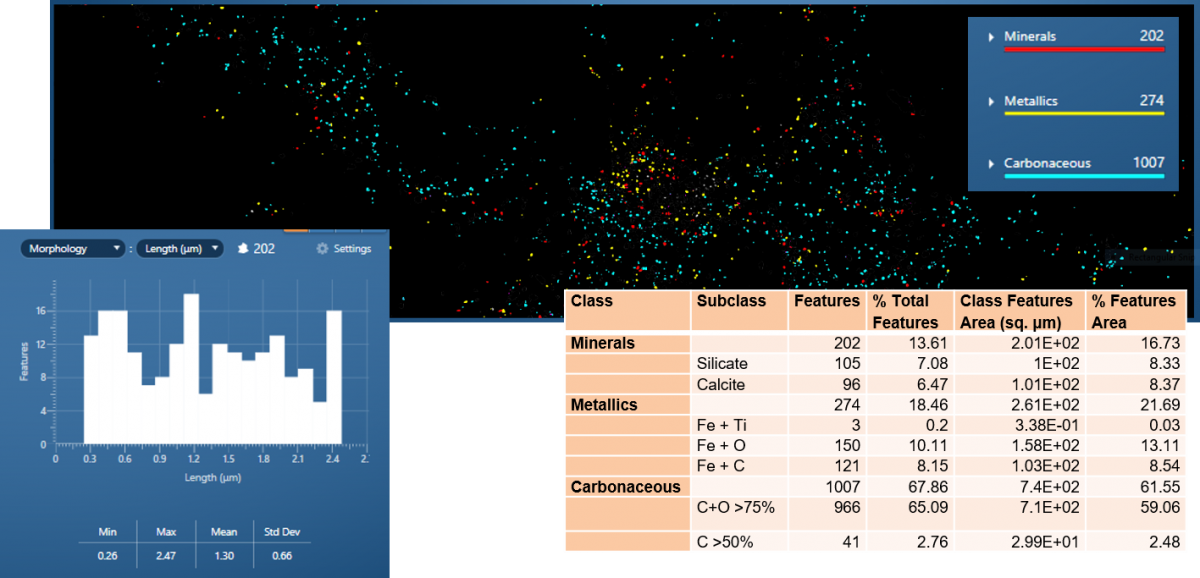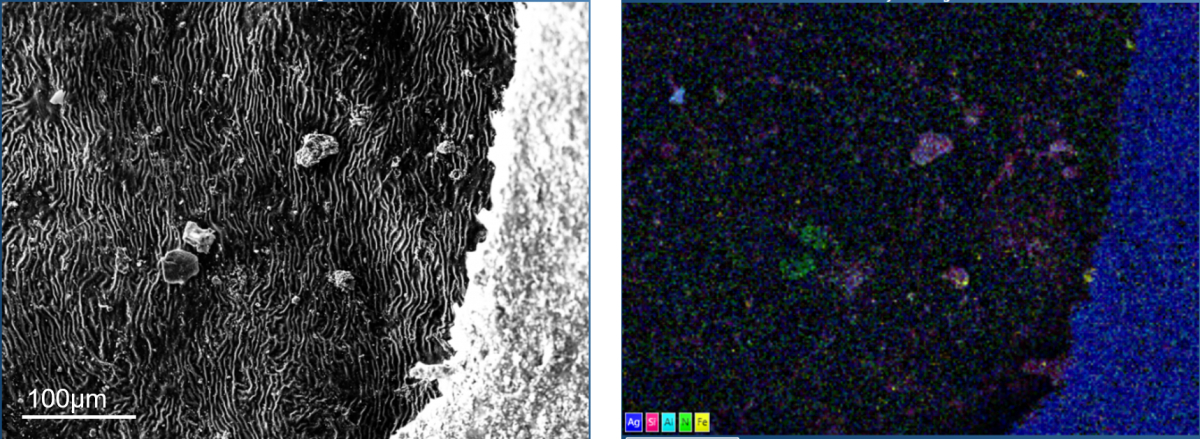产品
FIB-SEM
Nanomanipulators
OmniProbeOmniProbe Cryo软件
AZtec3DAZtecFeatureAZtec LayerProbeTEM
Hardware
EDSUltim MaxXploreImaging
软件
AZtecTEM
16th July 2019 | Author: Dr Matthew Hiscock
The particles that are in the air that we breathe are a topic of huge global interest – barely a day goes by where we do not see a swathe of headlines on the health impacts of exposure to consistently high levels of airborne particulate matter (PM).
According to data from the World Health Organisation (WHO), 91% of people live in areas where annual mean concentrations of urban PM is higher than recommended limits and in excess of 8 million of deaths, from causes such as heart attack, stroke, respiratory infections and lung cancer.
In order to mitigate the health impacts of particulate matter we need to understand what sources are generating this material and which types of particle are the most dangerous. If we have this knowledge then reduction strategies can be targeted most effectively. Many of the widely used technologies for identifying PM measure particle size or composition – automated SEM + EDS with Ultim Max detectors and AZtecFeature provides an ideal solution for the measurement of both simultaneously, allowing for that information to be associated on a particle by particle basis. Doing this allows for in depth interpretative classifications to be developed which can identify multiple sources of PM in mixed samples.

Here is an example of this in action – the sample that you can see is one with a range of <2.5μm particles on it from close to our office. We can see that there are several distinct populations of particles mixed in together in this sample – we have 2 different minerals, 3 different metallic types and a large number of carbon-based particles. This is likely to indicate at least 2 sources. By comparing this mixture to similar data collected from sources we can tell the story of the what is in the air we are breathing.
We can take our analysis of PM in the SEM even further and look at some really interesting topics such as how PM interacts with plants. We’ve recently been looking at holly leaves collected from multiple locations – some near traffic, others far way, to see what particulates we can find on them. This gives an idea of how far particulates can travel from their sources if certain types travel more readily than others. As leaves are biological materials and therefore hydrated and easy to damage with an electron beam, we make use of our Ultim Extreme detector to analyse them. This is because the Extreme lets us work at useful speeds even under the very low energy conditions we need to avoid damaging the leaf. An example of this is in the images below. You can see in the left hand electron image the structure of the leaf and the particulates on it – the right hand image shows what those particulates are – primarily Si based dust – potentially from road dust, demolition or a natural, nearby mineral source. By using the approaches I mentioned above we could determine that source and draw some conclusions.

This is, of course, a huge topic and not one that we can go into in detail in a short blog – so, if you’d like to hear more, register for our upcoming webinar: “Airborne Particles: Where They’re From and How They Affect Us”
We send out monthly newsletters keeping you up to date with our latest developments such as webinars, new application notes and product updates.
 公安机关备案号31010402003473
公安机关备案号31010402003473